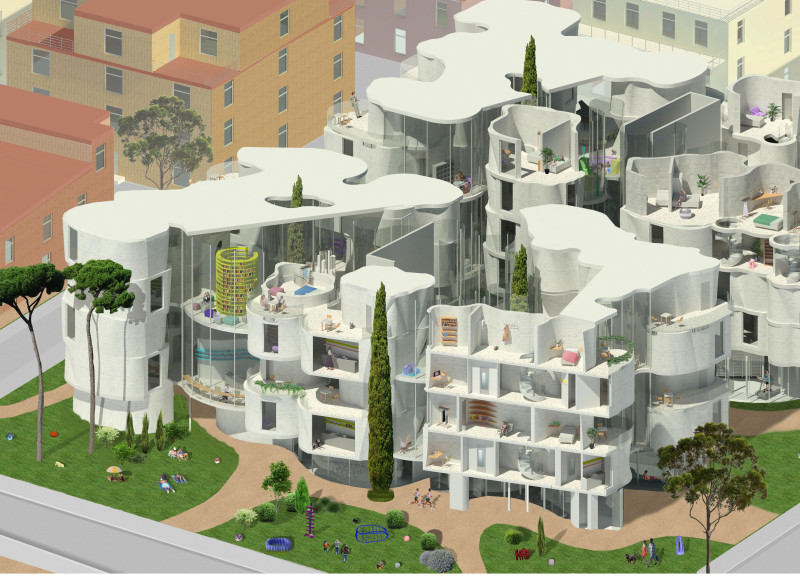5 key facts about this project
The structure features an organic design characterized by undulating forms, reflecting both the natural landscape and the fluidity of its communal spaces. It consists of interlinked living units that promote social interaction while preserving individual privacy. The use of recycled materials, such as 3D-printed blocks derived from plastic waste and concrete, foregrounds sustainability. Glass elements enhance the transparency of the design, allowing for ample natural light and a visual connection to the outdoor environment.
The project serves multiple functions, including private residences and shared spaces for community engagement. Key components include a library, gym, barbecue areas, and multi-purpose public spaces intended for various social interactions. This design not only accommodates daily living but also encourages active participation in communal activities, reducing feelings of isolation.
Sustainability plays a crucial role in the Digital Cave's unique design approach. The architectural concept challenges conventional housing by integrating advanced technologies such as 3D printing, allowing for efficient construction processes. Furthermore, the project incorporates digital platforms to facilitate communication among residents, strengthening community bonds by providing a means to coordinate shared resources and events.
The incorporation of natural landscaping within the project enhances its appeal and creates tranquil outdoor spaces for residents. By prioritizing ecological considerations, the Digital Cave is a response to urban pollution, providing functional living areas while encouraging an environmentally responsible lifestyle. Through these innovative design ideas, the project stands apart from traditional approaches to urban housing, positioning itself as a significant model for future developments in collective living.
For further details on the architectural plans, sections, designs, and overall ideas that define the Digital Cave, readers are encouraged to explore the project presentation, which offers deeper insights into this thoughtful architectural endeavor.


























